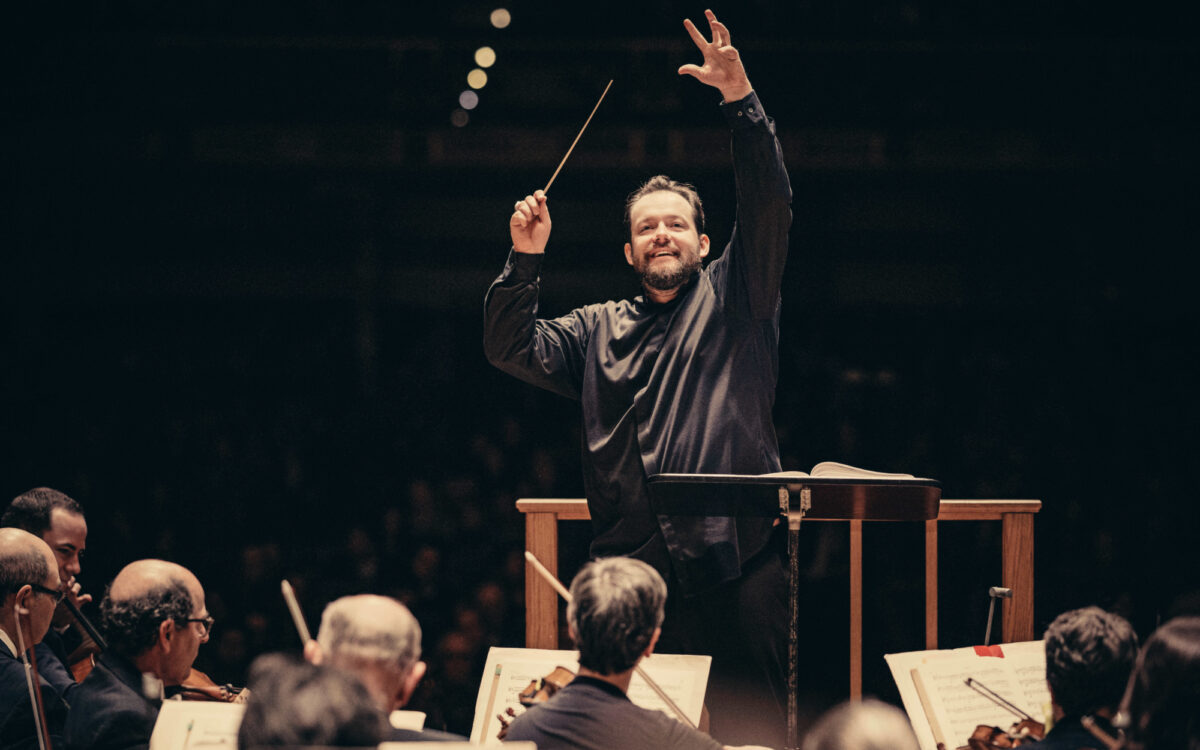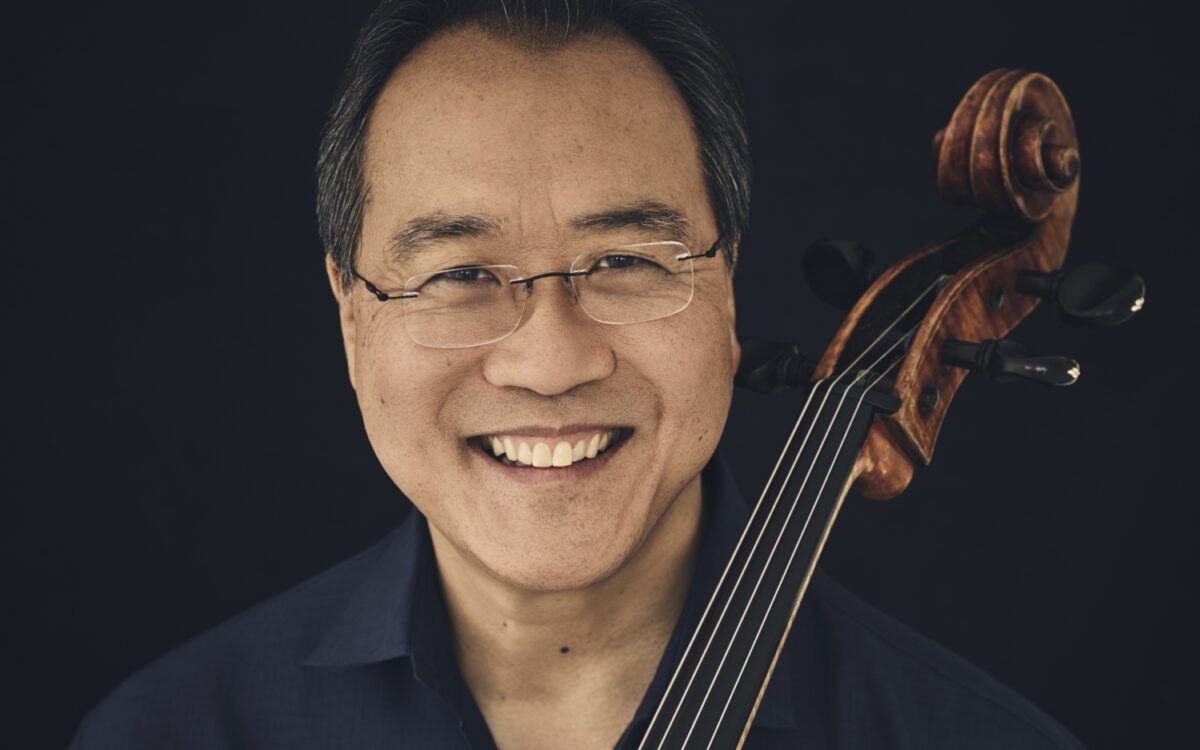Symphony No. 11 in G minor, Opus 103, The Year 1905
Dmitri Dmitrievich Shostakovich was born in St. Petersburg, Russia, on September 25, 1906, and died in Moscow on August 9, 1975. He completed the Symphony No. 11 in Komarovo, near Leningrad, on August 4, 1957. The premiere took place in the Bolshoi Hall of the Moscow Conservatory on October 30, 1957, with Nathan Rakhlin conducting the State Symphonic Orchestra of the USSR, as part of the celebration of the 40th anniversary of the 1917 Bolshevik Revolution. The American premiere took place on March 17, 1958, with Leopold Stokowski and the Houston Symphony Orchestra, who recorded it the following month.
The score of Shostakovich’s Symphony No. 11 calls for piccolo, three flutes, three oboes and English horn, three clarinets and bass clarinet, three bassoons and contrabassoon, four horns, three trumpets, three trombones, tuba, timpani, triangle, snare drum, cymbals, bass drum, tam-tam, xylophone, celesta, chimes, two harps, and strings.
Often called the “dress rehearsal” for the 1917 Bolshevik Revolution, the Revolution of 1905 followed years of labor and political unrest in Tsarist Russia. Strikes, demonstrations, and violent acts of terrorism spread across the vast expanse of the Russian empire. The Tsarist regime’s grossly incompetent conduct of a war with Japan in 1904-05 further undermined public confidence. On January 9, 1905, a regiment of Cossack horse guards defending the square in front of the Winter Palace in St. Petersburg, home of Tsar Nicholas II and his family, destroyed what little trust remained. Confronted by a large, unarmed peaceful procession of workers (perhaps as many as 100,000) led by a Russian Orthodox priest bearing a petition requesting freedom of speech and other basic rights, the Cossacks nervously opened fire. (Among the protestors, according to Shostakovich’s son Maxim, was the composer’s own father.) As many as 200 of the marchers were killed and many others wounded. “Bloody Sunday,” as it came to be called, sparked outrage and massive strikes. More unpopular than ever, Tsar Nicholas II finally granted some concessions, including the establishment of an elected legislative assembly. But these measures proved too little, too late. Only twelve years later, the Tsar abdicated, bringing to an end more than 300 years of Romanov rule.
After Vladimir Lenin and his Bolshevik party gained control of the government in October 1917, the events of the 1905 Revolution assumed intense historical and propaganda significance. Those who died became visionary martyrs to the Communist cause, memorialized in songs, poems, novels, films, street names, and monuments. In 1957, as the USSR was observing the 40th anniversary of the Bolshevik Revolution, these celebrations reached particular fervor. Soviet creative artists in all fields were encouraged to produce work inspired by crucial events leading up to 1917, including the Revolution of 1905. As the leading Soviet composer of the day, Dmitri Shostakovich was expected to participate. He complied by producing his Symphony No. 11—subtitled “The Year 1905”—an emotional, cinematic, accessible, and frankly programmatic work with close links to Soviet popular culture of the revolutionary and post-revolutionary period.
“I have great affection for this period in our national history, so vividly expressed in revolutionary workers’ songs of the time,” wrote Shostakovich. “I don’t know yet if the symphony will make direct use of their tunes, but the musical language will closely resemble the character of the Russian revolutionary song.”
In the end, Shostakovich did incorporate the tunes of seven different revolutionary folk songs. He also used tunes of two other songs he had previously composed for “The Ninth of January,” the sixth section of his Ten Poems, Opus 88 (1951), settings of turn-of-the-century revolutionary poetry. In addition, the final movement contains a quote from a tune by Soviet composer Georgii Sviridov written for his 1951 operetta Bright Lights. Indeed, most of the symphony’s musical material originates in these songs, a notable departure from Shostakovich’s practice in his preceding ten symphonies, which make extremely sparing use of imported material. Shostakovich did, however, compose the symphony’s most memorable music, the powerful opening of the first movement, “Palace Square.” Scored in hollow open fifths for muted strings, two harps, timpani, and muted solo trumpet, it casts a hypnotic spell, a haunting evocation of autocracy, cold, and the austere expanse of stone around the Winter Palace. This hushed, chilling episode (reminiscent of Sergei Prokofiev’s music for “The Battle on the Ice” in Alexander Nevsky) returns throughout the symphony as a kind of refrain.
In turning to the popular song tradition, Shostakovich was following a well-worn path. Russian composers of the 19th century (Rimsky-Korsakov, Borodin, Balakirev, Mussorgsky) made extensive use of folk material. Tchaikovsky’s Fourth Symphony, for example, climaxes with a wild treatment of the folk tune “A little birch tree stood in a field.” Like them, Shostakovich creates extensive variations on the folk song tunes that provide the structural basis for the entire composition. Traditional sonata-allegro form, the fundamental ingredient of “classical” symphonies, is virtually absent here. Some scholars suggest that the Symphony No. 11 might better be described as a symphonic poem.
Under Socialist Realism, the heavily enforced official doctrine of Soviet culture, composers were urged to draw upon the rich Soviet and Russian folk legacy for its healthy, simple, proletarian values and accessibility. Shostakovich’s exploration of this repertoire also reflects a rising idealism in Soviet society in the years following Stalin’s death in 1953, a desire to recapture the sincerity and enthusiasm of the 1920s after the terror of the Stalin years. Musicologist Levon Akopyan sees the Eleventh Symphony’s structure as a tribute to the massive propaganda “mystery plays” enacted in public spaces in the 1920s. “Their dramatic structure was as follows: first a picture of the unenlightened past, then—awakening of protest, maturation of revolutionary consciousness, decisive battle, mourning over the fallen heroes, and finally, the triumphant dawn of the new era.”
The Symphony No. 11 follows this pattern. The first movement (“Palace Square”) portrays the merciless inhumanity of autocracy, first with an extensive prologue, and then with the introduction and transformation of two prison songs (“Listen,” “The Convict”). The second movement (“The Ninth of January”) depicts the Cossacks’ assault, using two marching songs (“O Tsar, Our Father,” “Bare Your Heads!”). Meditative and requiem-like, the third movement (“Eternal Memory”) unfolds numerous variations of a well-known tribute to fallen heroes (“You’ve Fallen Victim”) over a slow ostinato foundation. Four different fast marching tunes (“Rage, O Tyrants”; “The Varsovienne”; “Comrades, the Bugles Are Sounding,” and Sviridov’s tune) combine in the raucous, percussive finale (“The Tocsin”). Several of the songs appear, as unifying ideas, in multiple movements. Adding to the overall sense of unity, the four movements are played attaca, without pause.
In the USSR, official critics greeted the Eleventh Symphony with universal—and, in Shostakovich’s case, unusual—acclaim as a work of “deeply Russian and national art.” It was even recognized with the prestigious Lenin Prize in 1958. But in unofficial circles, questions were raised about the composer’s intentions. Was Shostakovich denouncing only the Tsarist tyranny and oppression of 1905? Or was he secretly expressing criticism of the Soviet regime’s own brutal treatment of its opponents—and specifically, the recent Soviet intervention against Hungarian freedom fighters in 1956? Contradictory accounts exist of Shostakovich’s alleged comments on a possible hidden meaning, but—as is so often the case with his music—we have no conclusive answer to these intriguing questions.
Harlow Robinson
Harlow Robinson is an author, lecturer, and Matthews Distinguished University Professor of History, Emeritus, at Northeastern University. His books include Sergei Prokofiev: A Biography and Russians in Hollywood, Hollywood’s Russians. His essays and reviews have appeared in the Boston Globe, New York Times, Los Angeles Times, Cineaste, and Opera News, and he has written program notes for the Boston Symphony Orchestra, Los Angeles Philharmonic, New York Philharmonic, and Metropolitan Opera.


